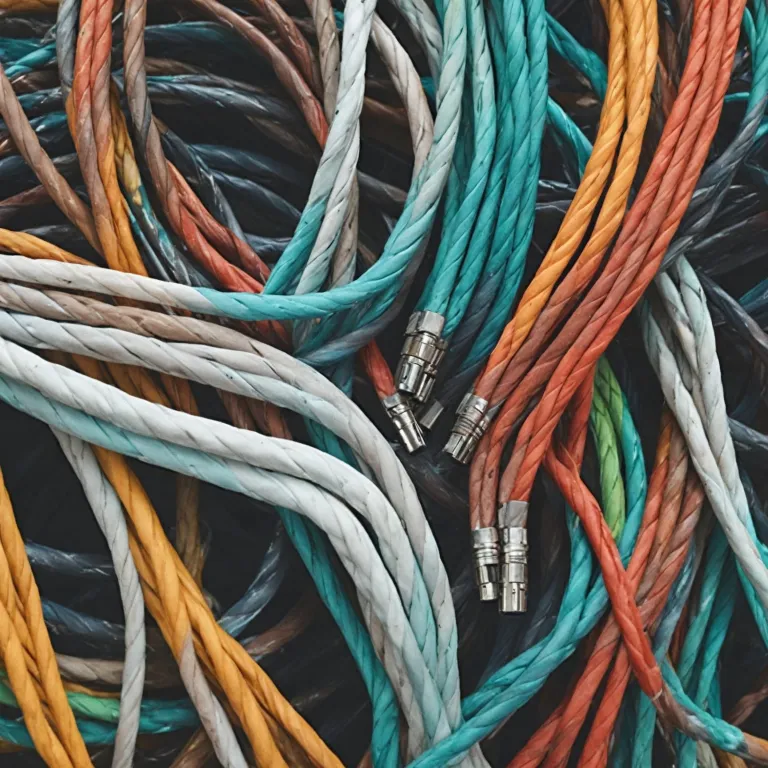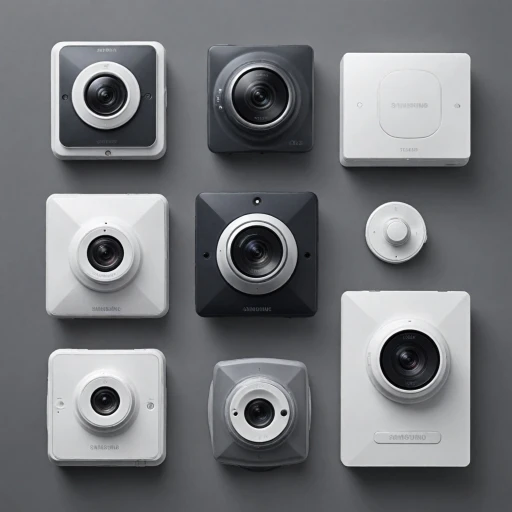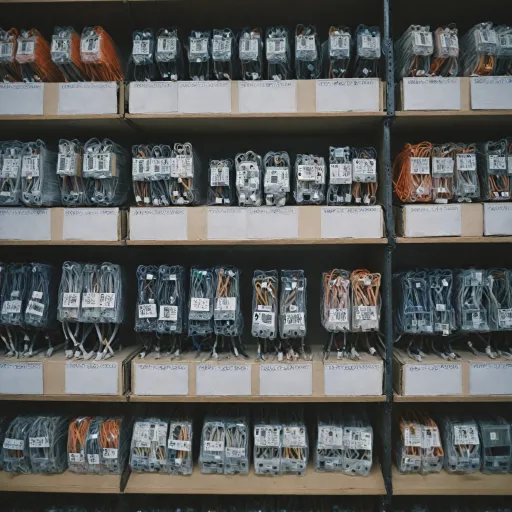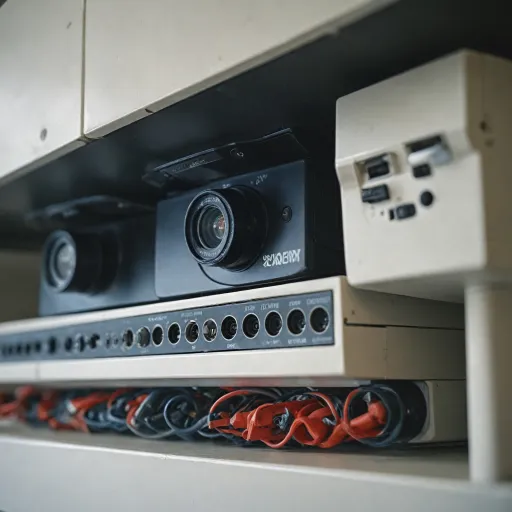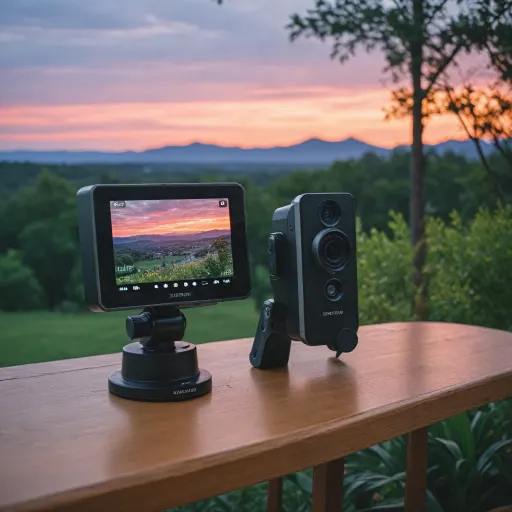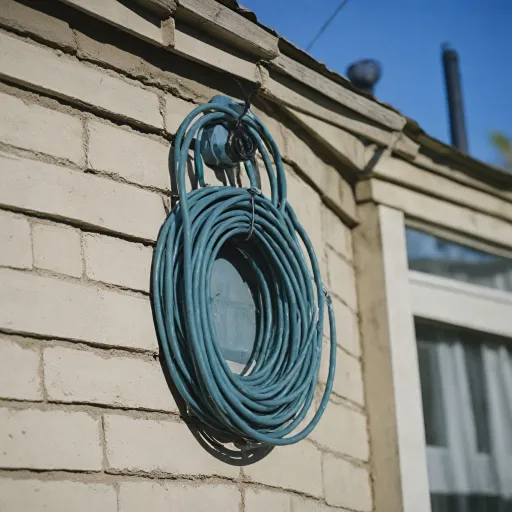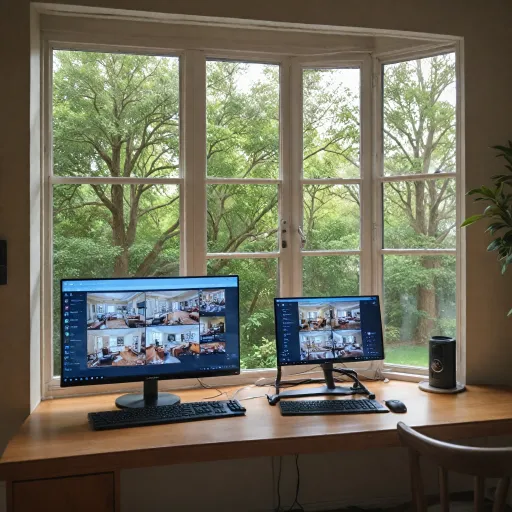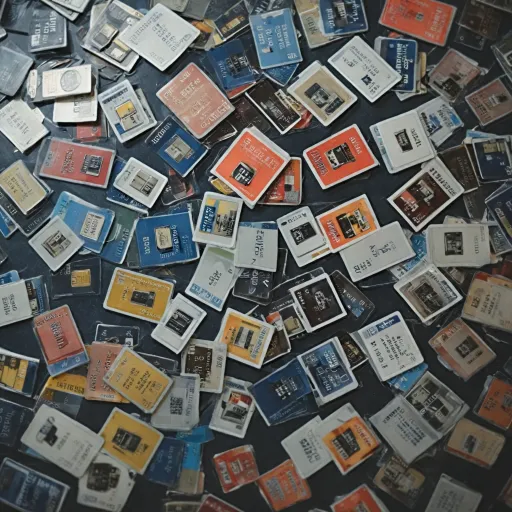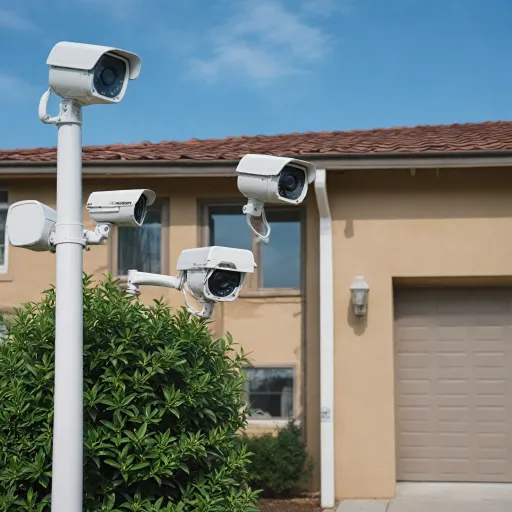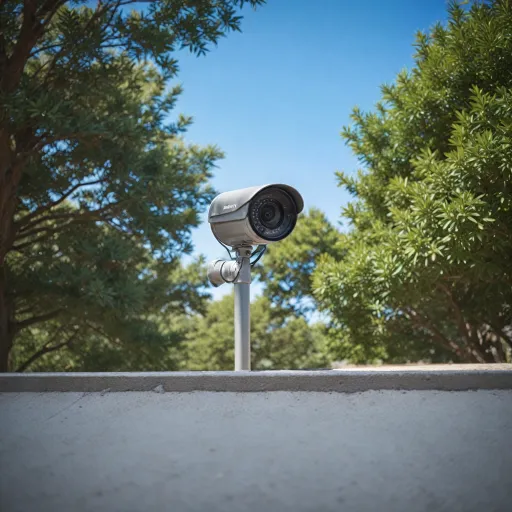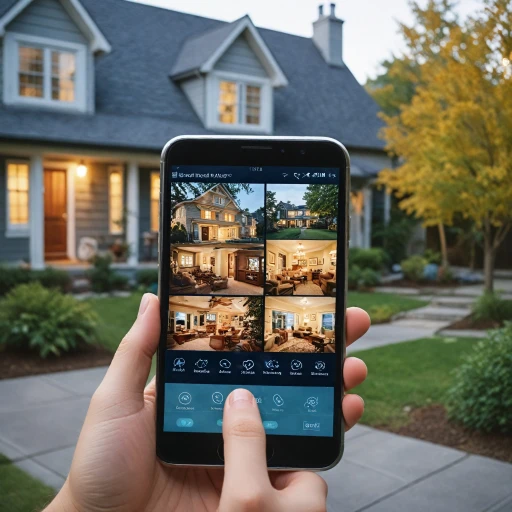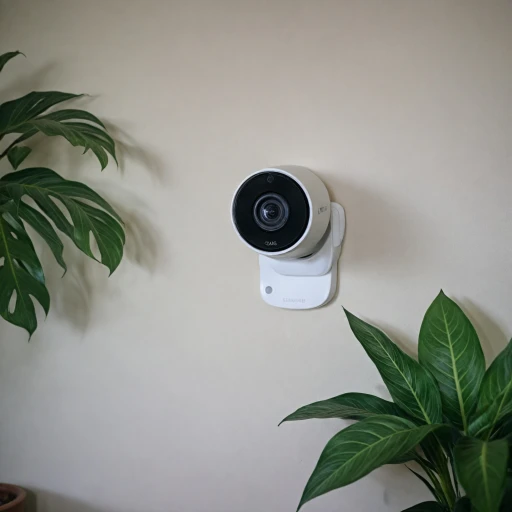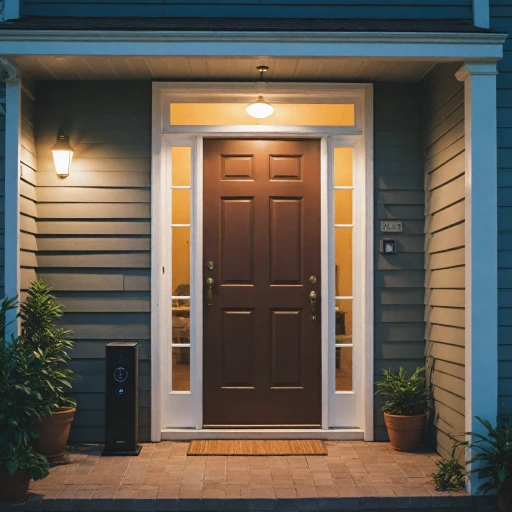
The Role of Cables in Surveillance Systems
The Backbone of Security: The Essential Role of Cables
In the realm of video security, cables are often the unsung heroes. They play a crucial role in ensuring that your CCTV camera system functions seamlessly. Whether dealing with analog systems or modern digital setups, the integrity and quality of your camera cables significantly influence the security system's performance.
Choosing the right cable involves understanding the various cable types and how they contribute to video and power transmission. The choice between coaxial cable and ethernet cable can determine the clarity of the video feed and the reliability of power supply, impacting both analog and digital camera systems. A coaxial cable is prevalent in traditional setups, while CAT cables are popular in IP camera systems.
The role of cables extends beyond mere connectivity; they affect the overall quality and work closely with the cables connectors to ensure a continuous flow of video and power. In addition, siamese cables combine video and power cable elements, offering a streamlined solution for security cameras.
The intricacies of setting up an efficient system include carefully planning the cable layout to avoid common issues and optimize performance, which is further delved into in our related section on wired backup camera benefits.
As technology advances, keeping a finger on the pulse of future trends in camera system cabling will help ensure that your system remains ahead of potential security threats. The right choice of camera cable not only enhances the security system's effectiveness but also ensures the price matches the performance. By understanding the vital role of a cable within camera systems, users can make informed decisions for safeguarding their premises.
Types of Surveillance Camera Cables
Exploring Variations of Camera Cabling
When setting up a surveillance system, selecting the right cable is critical to ensure the cameras function optimally and continue to provide reliable security. Different cable types offer various features and benefits, depending on their application in security camera systems. Here's a breakdown of some common camera cables to help you decide which is best suited for your needs.- Coaxial Cable: A widely used option in analog CCTV systems, coaxial cables are designed for high-frequency signals, making them ideal for video transmission. They come in various types such as RG59, RG6, and RG11, with RG59 being the most common for shorter runs. Quality is ensured with connectors like BNC, which provide a secure and reliable connection. While coaxial cables are also cost-effective, they require additional power cables to supply energy to the cameras.
- Siamese Cable: This cable combines power and video transmission in a single line, simplifying installation by requiring only one run of cable. Siamese cables are often a favored choice for both professional and DIY security camera setups.
- Ethernet Cable (Cat Cable): Used for IP cameras in modern camera systems, Cat5 and Cat6 cables can transmit power, video, and data through a single cable using PoE (Power over Ethernet) technology. Ethernet cables are valued for their ability to accommodate networked systems and extended cable runs without significant loss of quality.
- SDI (Serial Digital Interface) Cable: Although less common, SDI cables are used in broadcasting and professional settings to deliver high-quality digital video signals. They offer robust connectors and are suited for systems requiring pristine video quality.
Choosing the Right Cable for Your Ring Camera
Finding the Perfect Cable for Your Needs
Choosing the right cable for your Ring camera is a critical step in ensuring optimal performance, reliability, and security. Different camera systems have varied requirements, depending on factors like distance, power needs, and video quality. Understanding these elements will help you make informed decisions about your security system setup.
When selecting a cable, the first consideration should be compatibility with your existing security camera system. For analog cameras, coaxial cables like RG59 are commonly used, offering a reasonable balance of price and quality. These cables often come in black or white to suit different installation environments.
For modern setups, many prefer the use of Cat cables, such as Ethernet Cat5e or Cat6. These cables not only deliver robust video quality but also support Power over Ethernet (PoE), simplifying the installation by eliminating the need for separate power cables. This integration is essential in streamlining the connection process and reducing clutter.
If you're dealing with HD-SDI cameras, ensure that you select an HD-SDI compliant coaxial cable, which is specifically designed to handle the high bandwidth requirements of these advanced systems. Such cables ensure that the transmission of high-definition video remains uninterrupted and clear.
For those interested in CCTV camera installations where a video power connection is required, a siamese cable might be your best bet. Siamese cables integrate both video and power cables into a single run, providing convenience and efficiency, particularly for larger installations.
To sum up, the choice of camera cables for your security system should be influenced by the specific requirements of your set-up, including the type of cameras and systems in place, the distance between components, and the desired video and audio quality. Consulting with an expert or a trusted provider can also give you peace of mind that you're making the right investment for your home's security.
Installation Tips for Surveillance Camera Cables
Steps to Properly Install Your Surveillance Camera Cables
Proper installation of surveillance camera cables is crucial to ensuring your security system functions optimally. Here's a practical guide to help you navigate the installation process:- Understand Your Cable Layout: Before beginning, plan the layout for your security cameras. Consider where your cameras, power sources, and DVR or NVR systems are located. Determine the lengths of coaxial, siamese, or cat cables needed, accounting for potential obstacles or detours.
- Prepare Your Tools: Gather necessary tools and materials. You'll typically need a drill, screwdriver, wire stripper, and possibly a fish tape to run cables through walls or ceilings. Ensure you have the right cables, such as ethernet cables for IP cameras or coaxial cables for analog setups.
- Running the Cables Safely: When running cables, avoid tangles and kinks which can impede video quality. For best results, run cables through walls or ceilings. Where this isn't possible, use cable conduits to protect them from wear and tear. Avoid placing cables near high-power electrical wires to prevent interference.
- Connect Cameras and Systems: Securely attach connectors to both ends of your cables. Use BNC connectors for coaxial cables or RJ45 connectors for cat cables, ensuring a snug fit. Connect the camera cables to your camera systems and check that all connections are stable.
- Check Power Supply Connections: Make sure power cables are properly linked to a reliable power supply. If using a siamese cable, ensure both the video and power components are correctly connected.
- Test the System: Once installed, test each camera for video quality and connectivity. Verify that all cameras feed correctly to the security system. Adjust and secure cables as needed, ensuring a neat, organized setup.
Troubleshooting Common Cable Issues
Addressing Common Issues in Cable Connections
Even high-quality security camera systems can face issues due to cables and connectors. Understanding these common problems helps maintain the effectiveness of your setup. Identifying and resolving these cable-related challenges will enhance your video surveillance system.
Identifying Cable and Connector Failures
Security cameras depend heavily on reliable power and data transmission through their cables. Problems with your cables or connectors may lead to faulty video feeds or a complete system failure.
- Loose Connections: Ensure all cables, including connectors like BNC and SDI, are securely attached. A loose connector can result in intermittent loss of video or power.
- Broken or Frayed Cables: Examine cables for damage, such as cuts or wear. A damaged coaxial, siamese, or ethernet cable can severely impact your system's performance.
- Signal Interference: Electromagnetic interference can affect analog camera feeds over coaxial cables. Ensure cables are routed away from strong electromagnetic sources.
Addressing Power Supply Problems
The power supply is essential for maintaining continuous operation of your camera system. Power cable issues can manifest as flickering video feeds or complete camera outages.
- Insufficient Power: Use a power supply capable of delivering steady power output required for your cameras. Check manufacturer specifications to ensure compatibility with your cable setup.
- Power Over Ethernet (PoE): Cat cables can deliver both data and power through a single line, simplifying installation. Ensure your system supports PoE for optimal configuration.
Ensuring a Reliable Setup
Regular maintenance checks can mitigate common issues with video power cables and connectors. Confirm you're using appropriate cable types suitable for indoor or outdoor installations based on environmental conditions. For in-depth guidance on camera system maintenance, refer to product manuals or trusted online resources.
Future Trends in Surveillance Camera Cabling
Emerging Trends in Surveillance Camera Cabling Technology
As technology evolves, the surveillance industry is seeing significant advancements in camera cabling. These changes are poised to improve the efficiency and effectiveness of security systems, including Ring Cameras.- Rise of Power over Ethernet (PoE): Ethernet cables, particularly Cat cables, are increasingly being used due to their ability to transmit both data and power, eliminating the need for separate power cables. Systems utilizing PoE offer streamlined installations and enhanced system efficiency.
- Expansion of Wireless Technologies: The shift from traditional cabled systems to wireless can reduce reliance on physical connectors. While cables like coaxial and BNC remain prevalent, innovations in wireless transmission are noteworthy.
- Integration of Hybrid Cables: Siamese cables, which combine power and video transmission, remain popular, but hybrid options are emerging to support mixed analog and digital systems, facilitating easier upgrades and maintenance.
- Focus on Quality and Durability: As more camera cables are exposed to harsh environments, there is an increased emphasis on materials that enhance their longevity and performance, ensuring consistent video quality.
- Cost-Effective Solutions: As technology progresses, there's a notable drop in the prices of traditionally expensive systems, making high-quality security camera solutions accessible to more homeowners and businesses.
